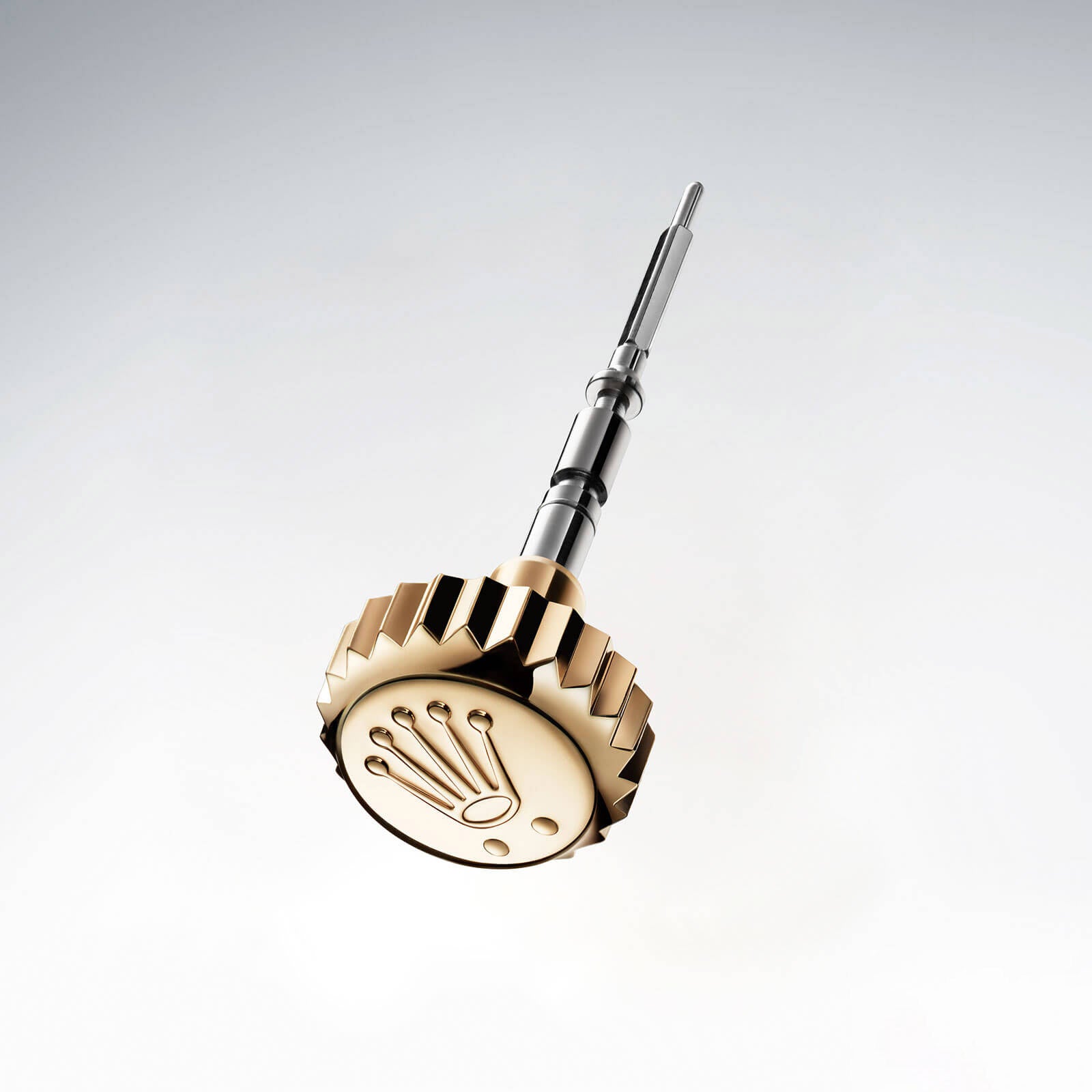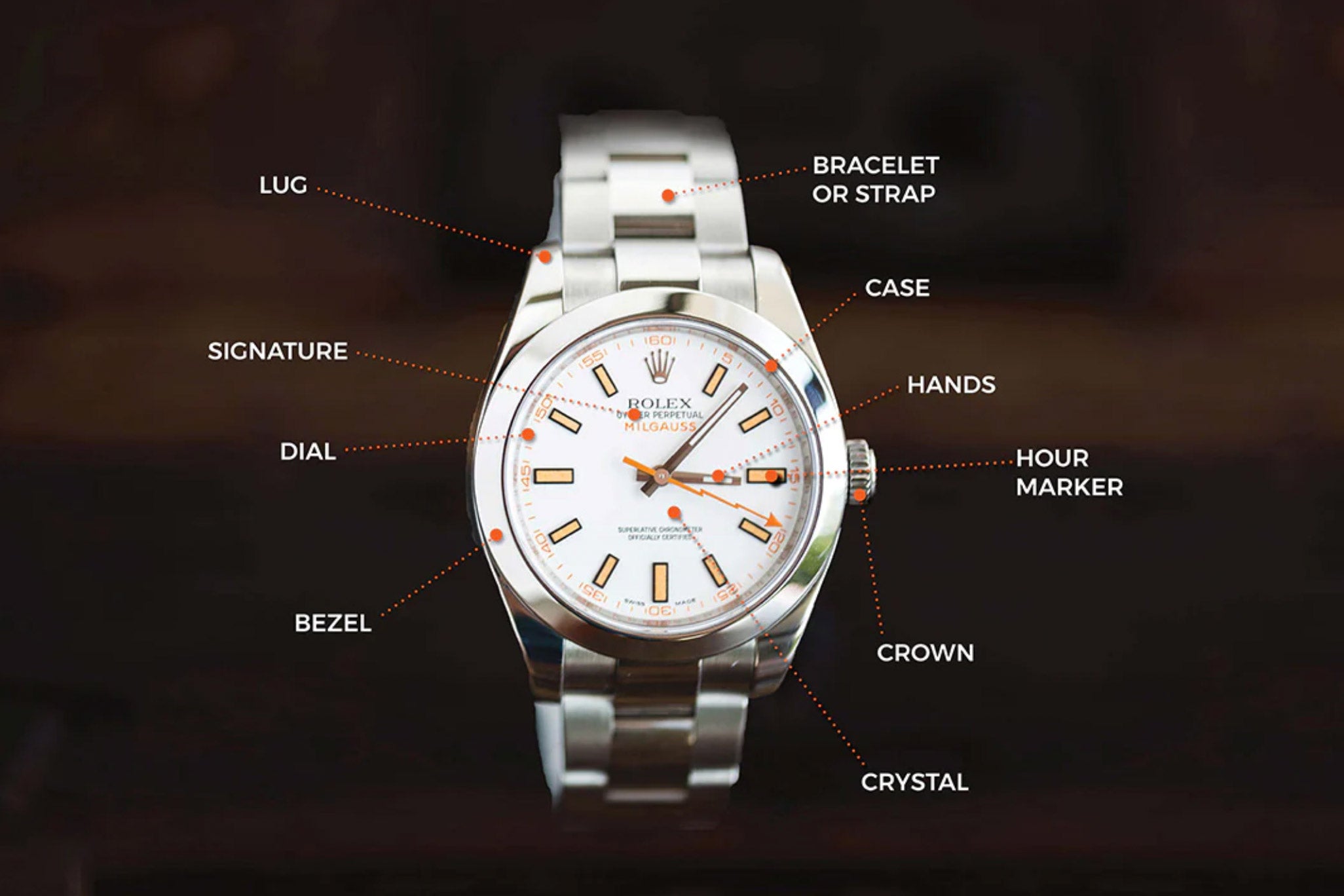In the world of horology, some of the watch terms used by watch enthusiasts can seem as intricate as the movements of the timepieces themselves. From 'complications' and 'movements' to 'bezels' and 'dials', watch terminology can be a bit overwhelming, especially for those new to the art of watch appreciation. Fear not, as we embark on a journey to explain the key watch terms in timekeeping. Whether you're a seasoned collector or a curious novice, this glossary will provide you with the key watch terminology you need to navigate the world of watches with confidence.
50 Watch Terms Every Enthusiast Should Know
The Main Components Of A Watch
Before we dive into the depths of watch terms, it's essential to understand the basic structure of a timepiece. A watch consists of several key components, including:
- Case: The outer shell that houses the watch's movement, dial, and other parts.
- Dial: The watch face displaying the time and other information.
- Hands: The thin, often metallic, pointers that indicate hours, minutes, and seconds.
- Indices: Markers on the dial that denote hours, often replaced by numerals.
- Bezel: The ring surrounding the crystal, which may be fixed or rotatable.
Movement Matters
The movement of a watch is its beating heart, determining its accuracy and functionality. Three main types of movements dominate the watch world:
- Automatic Movement: This self-winding movement harnesses the wearer's motion to wind the watch, eliminating the need for a battery.
- Quartz Movement: Powered by a battery, quartz watches are known for their precision and low maintenance.
- Mechanical Movement: These watches are powered by a mainspring, requiring periodic winding to keep time.
Dialing In: Watch Face Terminology
Understanding the terminology related to a watch's dial can enhance your appreciation of its design:
- Subdials: Small dials within the main dial that display additional information, such as the date or a chronograph.
- Luminous Markers: Hour markers and hands treated with a luminescent material for visibility in low light.
- Guilloché: An intricate pattern or texture often found on high-end watch dials.
Straps and Bracelets
A watch's strap or bracelet can significantly influence its overall aesthetics and comfort:
- Leather Strap: A classic choice known for its elegance and versatility.
- NATO Strap: A durable fabric strap with military origins, known for its casual appeal.
- Bracelet: A metal band composed of links, offering a timeless look.
- Deployant Clasp: A folding clasp that enhances strap security and ease of use.
Water Resistance
Water resistance indicates a watch's ability to withstand exposure to moisture. Two common measurements are used:
- ATM (Atmospheres): Indicates water pressure resistance, with 1 ATM equal to 10 meters (33 feet).
- Meters (M): Measures the depth a watch can withstand in meters.
Horological Complications
Complications are additional features beyond basic timekeeping. Some notable ones include:
- Moon Phase: Displays the current phase of the moon.
- Perpetual Calendar: Automatically adjusts for varying month lengths and leap years.
- GMT: Allows tracking of multiple time zones.
- Tachymeter: Measures speed based on time and distance.
Materials and Finishes
The materials used in watchmaking impact both durability and aesthetics:
- Sapphire Crystal: A highly durable and scratch-resistant material used for watch crystals.
- PVD Coating: A thin, protective layer applied to watch cases for added resilience.
- Rose Gold: A popular choice for watch cases, offering a warm and luxurious appearance.
- Stainless Steel: Known for its durability and resistance to corrosion.
Watch Styles and Genres
Watches come in various styles and genres, each with distinct characteristics:
- Diver's Watch: Designed for underwater use, known for high water resistance.
- Pilot's Watch: Features a legible dial and often includes aviation-related functions.
- Dress Watch: A classic, minimalist design suitable for formal occasions.
- Sports Watch: A versatile style that combines aesthetics with functionality.
Watch Brands and Traditions
Understanding brand-related terminology can provide insights into a watch's heritage and quality:
- Swiss Made: Indicates that a watch is manufactured in Switzerland, known for watchmaking excellence.
- Horological: Pertaining to the art and science of timekeeping.
- In-House Movement: A movement manufactured by the same company that produces the watch.
- Tourbillon: An intricate and visually captivating movement complication.
Conclusion
Armed with this glossary of watch terminology, you're better equipped to appreciate the world of horology. As you explore the diverse and captivating realm of timepieces, remember that the language of watches is your gateway to understanding and cherishing these intricate and remarkable creations. Whether you're eyeing a classic dress watch or an adventurous diver's watch, your journey begins with deciphering the lingo of the watch world. Happy horological exploration!
Frequently Asked Questions
1. What is a watch winder?
A watch winder is a device that keeps automatic watches running when not worn. It mimics the motion of the wrist to wind the watch's mainspring, ensuring it stays powered and maintains accurate time.
2. What is a watch bezel?
A watch bezel is the ring around the watch crystal that holds it in place. Some bezels are stationary, while others rotate and can be used for various functions, such as measuring elapsed time.
3. What is a watch lug?
Watch lugs are the protruding extensions on either side of the watch case where the strap or bracelet is attached. They play a crucial role in securing the band to the watch.
4. What is a watch crown?
The watch crown is a small knob on the side of the watch case used for setting the time, date, and other functions. It's often protected by crown guards.
5. How do watches work without batteries?
Watches can work without batteries through various mechanisms, such as automatic movements powered by a mainspring, or quartz movements powered by a battery but regulated by a quartz crystal.
6. How do watches track steps?
Watches that track steps typically use accelerometers or gyroscopes to detect motion. This data is then processed to estimate the number of steps taken.
7. How do smartwatches track sleep?
Smartwatches track sleep by monitoring movements and heart rate. This data is analysed to determine sleep cycles, including deep and REM sleep.
8. How did watches work before batteries?
Before batteries, most watches used mechanical movements. These movements relied on a wound mainspring and a series of gears to keep time accurately.
9. How do watches measure stress?
Modern watches equipped with stress-tracking features use heart rate variability and other physiological data to estimate stress levels.
10. How do watches measure heart rate?
Watches with heart rate monitoring use optical sensors that emit and detect light to measure blood flow and calculate heart rate.
11. Why are watches a good investment?
Watches can be good investments due to their potential for appreciation in value, especially vintage and luxury timepieces. They also offer intrinsic value as functional and wearable art.
12. What is caliber in watches?
A watch caliber refers to the specific design and specifications of the watch movement, including its size, shape, and functions.
13. What is quartz in watches?
Quartz in watches refers to the type of movement where a quartz crystal regulates the timekeeping. These watches are known for their precision and low maintenance.
14. What is tachymeter in watches?
A tachymeter on a watch bezel or dial is a scale used to measure speed or distance based on time. It's often found on chronograph watches.
15. What is hacking in watches?
Hacking in watches refers to the feature where the second hand stops when the crown is pulled out to set the time precisely.
16. What does Chrono mean?
"Chrono" is a term derived from the Greek word "chronos," meaning time. It is commonly associated with chronograph watches, which have timing functions.
17. Do watches work in space?
Watches can work in space because they don't rely on gravity for operation. However, their performance may vary depending on the type of movement and design.
18. What is lug width on a watch?
Lug width is the measurement between the lugs, or the distance between the two points on the watch case where the strap or bracelet is attached.
19. What does a watch winder do?
A watch winder is a device that keeps automatic watches wound and running when not worn. It prevents the watch from stopping and ensures accurate timekeeping.
20. What is ‘lug to lug’ on a watch?
"Lug to lug" on a watch refers to the measurement from one lug (strap attachment point) to the opposite lug on the watch case. It determines how a watch wears on the wrist.
21. What is a rotating bezel?
A rotating bezel is a bezel that can be turned. It's often found on dive watches and is used for tracking elapsed time or performing calculations related to diving.
22. What is a watch winder box?
A watch winder box is a container with multiple watch winders inside. It provides a convenient and organised way to store and maintain multiple automatic watches.
















What Is A Car Wheel Watch?
The 10 Best Watches With Step Counters 2024